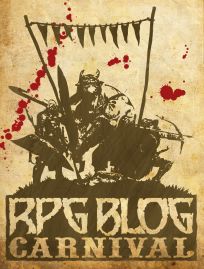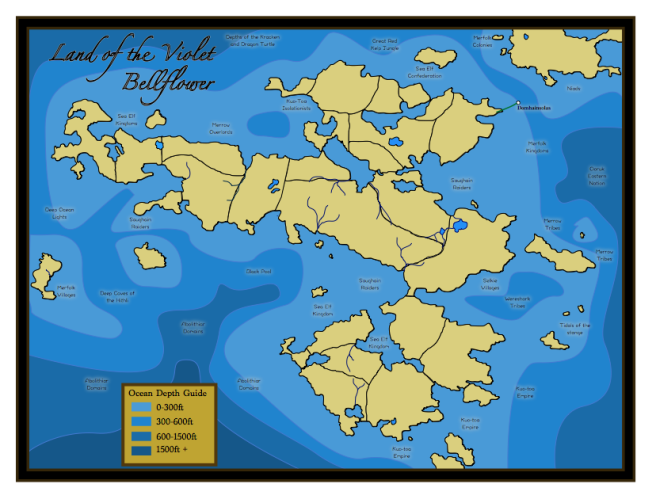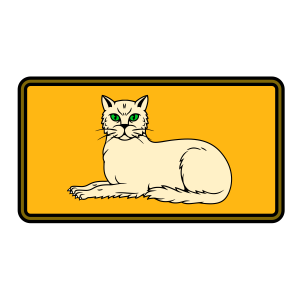In the A to Z Challenge I will be describing parts of my fictional world I am starting to use for Roleplaying games. Most of this information is not known by my players, not to hide it from them, but because I think tons about a location that I won’t force them to sit through during gaming sessions.
Bleh, life is a pain at times. Back pain, allergies, tons of stuff going on. On the plus side we played for about 6 hours on International Table top day which was Saturday.
The Xystus of the Gymnasium of Cos
The monastery of Cos, also known as the monastery of the Living Wills is just south of Huin in Tillman. It is run by a group of diverse masters. They specialize in protective fighting and the training of the mind and with the training of offensive magic. Eldritch Knights, Arcane Archers, Requip fighters and Monks with magic are often found training here. The most common weapon trained is a special form of glaive as it is the favorite weapon of several of the masters and trains both a military weapon but also techniques useful when using any pole or long stick that can be found.
The Xystus or covered long porch along the primary gymnasium courtyard is known as the Xystus of Games and is used when training the mind, with puzzles and games for logic and strategy as well as for magical training.
Disciple of Cos (5e Background)
Proficiencies: Glaive and improvised staff, History and Arcana (The glaive is a monk weapon if you are a monk)
Arcane Knowledge: Has learned one cantrip from the wizard or druids cantrip list that is not evocation.
The town of Yasu
The town of Yasu in the Kingdom of Durain is notable due to its production of preserved foodstuffs. The town of Yasu makes many types of lacto-fermeted pickles and slaws. They are also the producers of the magic Preserver’s pot and Fermenter’s pot.
Preserver’s pot (uncommon)
The preservers pot is usually a round pot about 30cm (1 foot) in diameter with a flat bottom and lidded top. Anything placed in the pot will be preserved in its current state for up to 3 years. This includes living tissue, foodstuffs, or even small animals.
Fermenter’s pot (uncommon)
The reverse of the preserver’s pot. Anything placed inside ages a month for every day placed in the pot. Great for making long curing cheeses and some types of fermented cabbage. It will also grow mold to a toxic level is the foods aren’t really meant to be preserved. Things left long abandoned in such a pot can release a toxic smell than can incapacitate the one who opens the pot. DC 17 con save or fall ill and vomit for the next 1d6 hours.
The town of Zoenit
The town of Zeonit in the nation of Ziquan is a great center for leather works, the dwarven nation also produces many types of studded leather and leather specially designed for durability on weapon and tool handles.
The leather emporium is an older family building that has been converted to store, sell and trade leather from all over Zeonit, much of it ending up in foreign markets. It it is leather you can find it here. The suede gloves, brightly colored and patterned bracers and even leather cloaks are popular with tourists and exporters. Due to the competitive market and being close to so much leather production all leather goods are 25% cheaper than found in most other places.
Recently a fad of color changing leather shawls has swept the market. Always guaranteed to impress and certainly priced to match their extravagance, some say there may be untold drawbacks in the process of mass producing these magic items.

 In the
In the 
 One of my favorite fantasy vehicles is the mehive from Nausicaa. Recently in Numenera they came out with a version in that game. While I like Numenera and have purchased it and The Strange, I still prefer 5th edition mechanics at this time. Here are the stats for my world, if my players ever find one.
One of my favorite fantasy vehicles is the mehive from Nausicaa. Recently in Numenera they came out with a version in that game. While I like Numenera and have purchased it and The Strange, I still prefer 5th edition mechanics at this time. Here are the stats for my world, if my players ever find one.
 Another hobby of the mages is the racing of flying creatures. The most prestigious race is part of the harvest festival, and takes place at the Castle of Gargoyles.
Another hobby of the mages is the racing of flying creatures. The most prestigious race is part of the harvest festival, and takes place at the Castle of Gargoyles. The halfling nation is a strong nation of warriors. While small in stature they have the best battle engineer and siege engines on the contient. After a lenghtly siege of Golim, a treaty was reached which made Golim’s Monarchy a dependency on the Shovamhon nation. With that acquisition, the Grand Counselor of Shovamhon controls the largest amount of land in the Land of the Violet Bellflower. Many fear the imperial aspirations of the Shavamhon Council.
The halfling nation is a strong nation of warriors. While small in stature they have the best battle engineer and siege engines on the contient. After a lenghtly siege of Golim, a treaty was reached which made Golim’s Monarchy a dependency on the Shovamhon nation. With that acquisition, the Grand Counselor of Shovamhon controls the largest amount of land in the Land of the Violet Bellflower. Many fear the imperial aspirations of the Shavamhon Council.
 In the
In the  Many unusual things exist in the world. One of these is the existence of tiny pocket dimensions. Ages ago wizards stumbled upon the ability to manipulate these pocket dimensions and tie them to objects and spells in the world. The practical result is the existance of objects with greater capacity than it would seem on the outside. (Insert, it’s bigger on the inside reference here). Also there is the ability for items to retrieve other items from pocket dimensions and extra-dimensional spaces.
Many unusual things exist in the world. One of these is the existence of tiny pocket dimensions. Ages ago wizards stumbled upon the ability to manipulate these pocket dimensions and tie them to objects and spells in the world. The practical result is the existance of objects with greater capacity than it would seem on the outside. (Insert, it’s bigger on the inside reference here). Also there is the ability for items to retrieve other items from pocket dimensions and extra-dimensional spaces. In the Lands of the Violet Bellflower there are organizations that are not just governments. Among these the Order of Bamboo is almost rivaled by the Omoikane. Both the name of the organization and the name of its leader are the same. In fact you could say it is a cult of personality, a person who has for some reason never died. The exact age of Omoikane is unknown, though she obviously predated the organization that bears her name. The Organization itself is over three centuries old, and is based in the Land of the Great Tree.
In the Lands of the Violet Bellflower there are organizations that are not just governments. Among these the Order of Bamboo is almost rivaled by the Omoikane. Both the name of the organization and the name of its leader are the same. In fact you could say it is a cult of personality, a person who has for some reason never died. The exact age of Omoikane is unknown, though she obviously predated the organization that bears her name. The Organization itself is over three centuries old, and is based in the Land of the Great Tree.